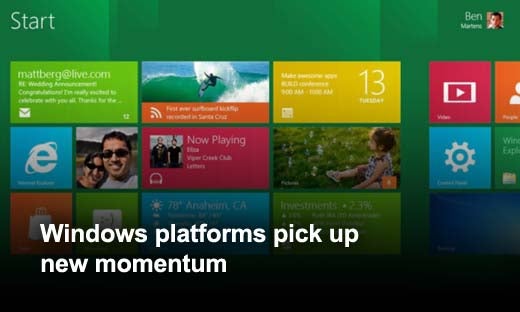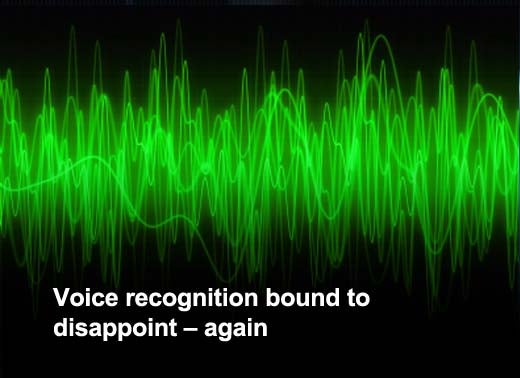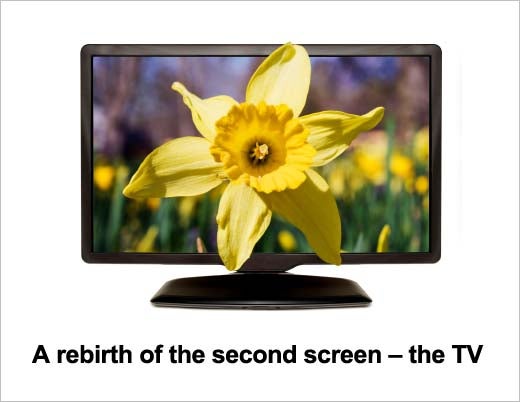As technology analysts and advisors, GP Bullhound expects a volatile 2012 with pockets of great innovation, opportunity and new successes, but also continued challenges as commoditization will wreak havoc to some industries, and hype will remain in others — creating near-term opportunity and in some cases long-term issues.
We are entering the new year under rather unusual circumstances. The macroeconomic outlook remains cloudier than ever due to unprecedented uncertainty around a number of major global economic and political situations including the fate of the Euro and the European economies, the status of the U.S. recovery and the role of the U.S. dollar, nervousness in recently outperforming emerging markets, like Brazil, and the global impact of a slowdown in China — just to mention a few.
Some things do remain the same however such as the continued global Internet trend, the rapid mobilization of users and applications and the inevitable trend of increased online social interaction.
In 2012, GP Bullhound expects Internet to continue its inevitable shift from being an information and content channel to a trusted platform for socializing, sharing, communicating and most importantly for 2012, consuming. Furthermore, they expect a lot of opportunity to come out of the rapid adoption of mobile online activities, particularly in emerging markets. They also expect to see some much needed innovation in the enterprise software arena, which is now well behind the consumer technology curve.
The macroeconomic outlook however remains cloudier with unprecedented levels of uncertainty on a global scale. In an ever-more connected and competitive global technology world, there will be little room to hide without differentiated products or services. The value of IP will continue to rise, while commoditization will punish the me-too players. As a consequence, they are seeing investors and acquirers becoming increasingly willing to travel far to find best-of-breed companies, supporting an anticipated rise in cross-border acquisitions and investment activities. All in all, they look forward to an interesting 2012.
Click through for nine technology predictions for 2012, as identified by GP Bullhound.
Leveraging innovations in Big Data, GP Bullhound predicts that recommendation engines will evolve in 2012 by integrating user-specific preferences and social mapping in order to provide more accurate, targeted recommendations curated just for you.
Recommendation engines have employed a breadth of tools to identify individual consumer preferences. Some engines require users to take a short quiz (Shoedazzle, Ness) to associate them with a targeted preference category, and others, for example BeachMint (fashion), focus on celebrity endorsement, under the assumption that individuals who associate with a celebrity will also associate with their lifestyle preferences. Similarly, subscription models, like Birchbox (beauty), focus on curating products for a highly targeted audience that associates with their brand.
Not to be overlooked, social networks are set to play an important role in personalizing recommendations as retailers leverage friends’ interests to predict purchasing behavior. At F8, Facebook announced its Open Graph lifestyle application partners, who gain access into Facebook users’ timelines to actively post user activities, like “listened to [song]” “read [article]”. Google also recently introduced Schemer, a social discovery service, which leverages social circles to help users determine what to do next.
For online retailers, personalized recommendations can provide a distinct advantage, differentiating them against their peers and mitigating the strengths of larger competitors, such as Amazon, whose selection and pricing remain the industry’s gold standard. As such, in November 2011, eBay acquired access into the recommendations space through recommendations platform Hunch, which connects users and their affinities through a “taste graph.” Further, Gap’s newest brand, Piperlime, features curated selections from leading women’s fashion trendsetters and stylists as another early indicator.
Companies to Watch: blekko, Ness, AHAlife, BeachMint, ShoeDazzle, Polyvore, WANTFUL, OpenSky, Trippy, gtrot, Jetsetter
GP Bullhound predicts that stand alone hardware or content propositions will find it increasingly difficult to compete as the trend of closely integrated hardware and content solutions accelerates.
Whereas the Apple iPhone smartphone remains the leading example of this successful integration, we’re starting to see a number of other sectors and vendors to follow.
The tablet and eReader markets are examples where purchase decisions are increasingly made based on the content ecosystem that the tablet can provide, rather than technological differences between the tablets. The wildly successful Kindle Fire, one of the few tablets in the market able to take a slice of the iPad’s dominant market share, is currently retailing for $50 below cost with Amazon’s margin being made on their content. This has also been an important differentiating point for the likes of Amazon and Barnes and Noble with their Kindle and Nook devices, respectively. Such pricing strategies highlight the importance of creating a content ecosystem.
Carrying over into the mobile sector, HTC acquired a number of content companies in 2011, including Saffron Digital, a UK video streaming company, which it bought for £30m, Onlive, the California-based games company, for $40m, and also $10m on a 10 per cent stake in KKBox, the Taiwanese online music service. HTC’s CEO, Peter Chou, was recently quoted in the financial times as saying “having leading-edge technology is no longer enough. It needs to be a holistic experience of hardware, software and content. What users really care about are the day-to-day experiences.” Motorola also acquired SetJam, a television and movie directory.
Retailers and media companies have also made acquisitions to integrate with their channels. For example, Tesco acquired Blinkbox in April, integrating online and physical copies of DVDs; Media-Saturn acquired 24/7 Entertainment, the mobile content distributor; and Time Warner acquired Flixter in a plan to boost their cloud-based content plans.
Companies to Watch: Spotify, we7, YUDU, ‘txtr, Smashwords, Easypress Technologies, SoundHound, and SoundCloud
The Russian Internet audience is now the largest in Europe with 51m users since September 2011 and one of the fastest developing in the world (Internet penetration only at 36 percent). It is also among the most socially engaged globally with the longest average time spent on social networks per user (almost 10 hours per month), proven monetization models (particularly in the gaming sphere), multiple social networking platforms (Facebook in competition with vKontakte, Odnoklassniki and a number of other platforms) and strong integration with other online sectors (e.g. e-commerce).
The last two years have witnessed strong investment activity on the back of the Mail.ru and Yandex IPOs, primarily in “copy-cat” models (e.g. Ozon, Avito, Wikimart in general e-commerce, KupiVIP in private sales, Ostrovok, OktoGo and Travelmenu in travel). With international investors increasingly comfortable with Runet, GP Bullhound anticipates a second wave of investments in new, innovative, Runet-born social start-ups, which will expand internationally. An early example of this is the social networking site Badoo, which was launched in 2006 by the founder of Russian dating site Mamba, and is now one of the largest in the world.
There are plenty of exciting start-ups to track, one example being Ecwid, an e-commerce provider within social networks as well as individual websites. Since launch in 2009, the business has become the second largest e-commerce provider for Facebook with strong international presence (less than 15 percent of revenue base from Russian clients). Zvooq, online music service from Dream Industries, combines Spotify with aTurntable-like community element. Other examples include online photo sharing communities (Pinme, Picorange), recommendation engines (Surfingbird), and brand comparison sites (The Battle of Brands).
Companies to Watch: Ecwid, Pinme, Picorange, Surfingbird, The Battle of the Brands, Zvooq
At a time where iOS and Android have become the dominant mobile platforms and Apple is gaining an increasing amount of market share in the PC and laptop markets, we predict that Windows platforms will have a strong showing in 2012, driven by significant traction in the mobile space through the re-emerging Nokia brand and the release of touch-focused, Windows 8 for PCs and laptops.
GP Bullhound believes that Windows 7 OS will gain share in the mobile space in 2012, driven by a number of factors, including the ability to offer a variety of handsets based on Nokia's re-emergence with a broad product portfolio (including phones with keyboard, smaller phones and rugged phones – none of which are addressed by the Samsung-Apple duopoly), the attractive price points of their handsets due to Nokia's value chain control and sourcing power, Nokia’s significant distribution capabilities, and the tight integration with outlook and office attachments – a powerful feature so far essentially only offered by Blackberry.
To support content growth in the Windows ecosystem, Microsoft and Nokia have incentivized app developers to their platform with monetary and support-based incentives, including cash pay-outs, handsets, and app design assistance. In a crowded marketplace, we believe these incentives will pay-off, leading consumers to welcome Windows 7 as a viable third alternative to iOS and Android.
Promoting a stronger user experience, Windows is placing an increasing emphasis on the seamless integration between their PC and Mobile OS. Accordingly, Windows 8 will be the first OS that has been specifically designed for touch screen PCs. While the OS will still support keyboard and mouse inputs, the interface has been radically updated, having been designed as a touch-first interface. Notably, this interface mimics the Windows 7 mobile OS.
Companies to Watch: Vertigo 3D Software, Read It Later, Evernote
While voice recognition technologies gained significant attention in 2011, GP Bullhound believes that broad market utility and adoption will again fail to materialize due to remaining technical constraints.
The launch of Siri on the iPhone 4S was one of the key selling points for the new iPhone 4S in 2011, but after the early attention, reviews and feedback are turning increasingly negative. Siri also spawned a number of imitators and followers (for example, Amazon acquired Zap), and GP Bullhound expects further disappointments ahead.
A primary complaint about Siri is that it only understands U.S. English, and has trouble understanding people who speak English with an accent. Even those people who are native English speakers have reported that Siri frequently misunderstands commands. Also, Siri can only search for businesses, maps and traffic in the U.S.
Other recent voice recognition app lunches include Dragon GO! and Cluzee. Dragon GO!, the offering from Nuance (who licenses their voice recognition technology to Apple) is widely used by both Android users and iPhone users who haven’t upgraded to the 4S. While Iris has taken steps towards legitimacy, such as tying their answers into the database for question-and-answer website ChaCha, this service has to date received lukewarm reviews. Cluzee has also been widely criticized for its inability to interpret natural speech. Google is also rumored to be developing a Siri competitor that could be built into the native Android OS, but we doubt that this will change the general picture. Despite the innovation in the space and progress that voice recognition technology has experienced recently, GP Bullhound believes that the technologies have a long way to go before they displace mobile search.
Companies to Watch: Nuance
Today, active Facebook users alone account for over 38 percent of the world’s Internet population. Additionally, there are nearly 150m users on LinkedIn and 100m active users on Twitter. Driven by their massive membership and demographic super-status, social networks will become the go-to avenue for talent acquisitions in 2012.
Social recruiting applications, like Branchout, innovate an armory of recruiting tools to improve relevancy in the recruitment process by adding social association search functionalities and pushing users to add granular skills data. Now, any company, from small businesses to Fortune 100 companies can identify and hire prospective employees, leveraging the vast network of social network users.
Arguably, 2011 was already the beginning of this trend; according to a recent report from Jobvite.com, 80 percent of 600 surveyed answered "Yes" to the question, "Do you use social media for recruiting." In the same study, more than 22m Americans used social networks to find jobs in 2011, and of those, one in six people (15 percent plus), found a job through social networking. Today, 54 percent of job seekers are using Facebook, LinkedIn or Twitter for their search.
Whereas GP Bullhound sees 2012 being the break-through year for mass adoption of social recruiting, they also believe that high-end / executive positions will continue to be matched predominately through traditional channels. But for mainstream positions, social networks have tremendous potential for job seekers and employers alike.
Companies to Watch: BranchOut, Jobcast.net, Jobmagic, Jobvite, The Resumator, TwentyPeople, SmartRecruiters, Work4 Labs, Zartis, Identified, Talent.me, BraveNewTalent
The smart wallet is one of the most obvious personal mobile utilities which has been long awaited. With major industry forces now firmly behind it, 2012 will be the breakthrough year.
Although Near Field Communication (NFC) technologies were invented nearly a decade ago, it had not gained significant traction outside of niche applications in Japan and Korea. That all changed in September 2011 with the launch of Google Wallet. On the heels of the Google Wallet roll-out, Visa backed a NFC-based future with the introduction of its payWave service, which it recently approved for use on select smartphones. Further to the trend, American Express and several banks, online payment providers and mobile carriers are all either exploring or testing their mobile wallet solutions. Google Wallet is anticipated to debut in the UK during the 2012 London Olympics and Visa, the official payment sponsor of the Games is pushing the concept of a contactless event, where no visitor will need cash at any Olympic site. GP Bullhound predicts that the mobile wallet will gain significant traction in 2012, finally breaking into the mainstream.
While the infrastructure for mobile wallets is rapidly increasing in penetration – Samsung and Blackberry already have NFC-enabled phones on the market and Apple and Nokia are planning on integrating the technology in the near future – the ecosystem still needs time to fully develop including the critical reader infrastructure. Security remains a key issue preventing widespread adoption, as consumers express concerns about the risk of fraud and theft.
Whereas the mobile wallet as a utility looks set to break through, GP Bullhound is more skeptical about new market entrants making it big in this market. The trust and infrastructure factors already in place (Visa, MC, AMEX, Banks) are likely to continue to dominate the value chain with start-ups who can provide complementary rather than competitive (revolutionary) solutions are most likely to make it.
Companies to Watch: Serve, SCAP, Payfone, Isis
The TV looks set to pick up new momentum in 2012 by reinvented itself with advanced features like brilliant OLED screen displays, ultra-thin bezels, Internet connectivity, 3D display and a multitude of sensors, including voice and motion. GP Bullhound believes that these feature sets will transform the TV in 2012 into a fully interactive device and usher in the era of truly differentiated TVs.
While voice and motion detector technologies have garnered a lot of attention for their applications in other areas such as smartphones and video games, they are also gaining increasing importance in the TV market. In January, Verizon FiOS announced compatibility with the box Kinect platform, allowing for voice control over your FiOS TV. It has been widely speculated that Apple will soon introduce a TV which would incorporate their Siri in place of a remote control. Further to this end, Nuance, the company that licenses its voice recognition technology to Apple for Siri, announced Dragon TV, its new platform for voice-controlled television sets. With it, HDTVs could allow users to speak a task, such as "Watch 'Boardwalk Empire'" to initiate playback.
These and other value-added features such as 3D and LED and OLED screens are ushering in a new era of differentiation in the TV market. TV manufacturers are no longer competing solely on the basis of screen size (they’ve already outgrown our houses…), but rather based on the feature set they can offer. This paradigm shift is driving surging demand for Smart TVs – while more than 26 million Smart TVs shipped in 2011 (10.4 percent of all TVs shipped globally in 2011), more than 52 million sets are expected to ship in 2012 (20 percent of all TVs shipped).
Companies to Watch: Nuance, Myriad, Qello
Driven by an increasingly apparent supply-demand imbalance, GP Bullhound predicts that the rate of price decreases in the LED market will accelerate in 2012, reaching a level where mass adoption could finally take off. The music in the LED industry suddenly stopped in 3Q11 as LED manufacturers collectively realized they had spent too much money on adding capacity. The combined orders for Aixtron and Veeco, the two dominant players in the MOCVD space (a critical machine for manufacturing LEDs) saw their combined orders fall nearly 70 percent QoQ in 3Q11 compared to an increase of nearly 20 percent in 2Q11.
Chinese LED manufacturers, which constitute the largest share of the market for MOCVD machines at the moment, slammed the brakes on investments due to global macro concerns and the realization that the government subsidy-induced spending binge could lead to significant over-capacity in the industry. Indeed, Veeco estimates that factory utilization in November 2011 was as low as 60 percent in Asia and do not expect a meaningful uptick in orders over the next few quarters.
The equipment manufacturers’ loss, however, may be the consumers’ gain. LED light bulbs currently have too high a price point for consumers to switch to the more expensive (though much longer-lasting) LEDs. But prices are racing down at a very high rate, and GP Bullhound believes could even accelerate given the current supply chain dynamics. Veeco estimates that the cost per watt for a high power LED is tracking down 50 percent year-over-year. Aixtron estimates that the tipping point for consumer mass-market adoption for an LED light bulb is $15-20. This compares to the average cost of an LED light bulb in 2H11 of around $25. At a price point of $15-20, a LED bulb would be about 10x as expensive as an incandescent light bulb and 3-4x a CFL bulb. Furthermore, GP Bullhound predicts that the over-supply issue will persist throughout much of 2012, as LED manufacturers are incentivized to have high factory utilization rates in order to cover their substantial fixed costs. They expect to see a very large amount of LED light bulb alternatives hit the shelves with price points below the breaking points, allowing for a real mass-market consumer adoption.
Companies to Watch: Access Lighting, Alpine Systems, Halco












